Karl Bold: two victories among many defeats
It is not he, but only Jean Marais in the role of Count de Neville from the movie “Secrets of the Burgundian Court”. The time of the “Burgundian mods” is correctly shown, the knights began to wear a coat coat on top of the cuirass. But where is his chin rest on his plate? Well, how was it possible to forget about this at the duel of the court of God?
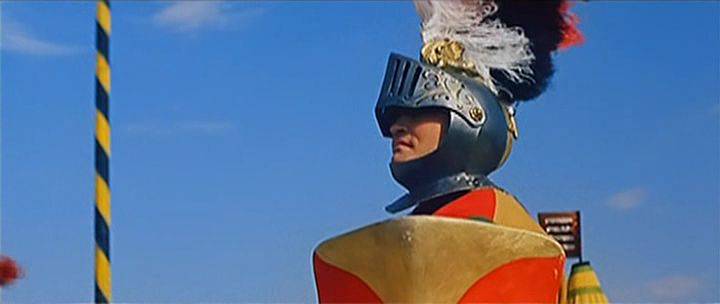
Here, the armor helmet is shown correctly, but again the patched warrior with an armor was supposed to be adjacent to the armor so that the tip of the enemy spear did not get between these details!
Undoubtedly, Karl the Bold, who headed the throne in Burgundy in the middle of the XV century, was one of the most odious figures of that time. Historians often call him the "Last Knight." Obviously, it was not for nothing that Karl got such a nickname, most likely, precisely for those qualities that particularly brightly characterized him as a strong, charismatic personality. Although the time in which he lived, was famous for its inhuman morals.
Karl the Bold had a not bad pedigree. His father, Philip the Good, (despite the nickname, who was able to give the English Joan of Arc with surprising ease), at one time raised and strengthened Burgundy, thanks to which its prestige in Europe was raised to a significant level.
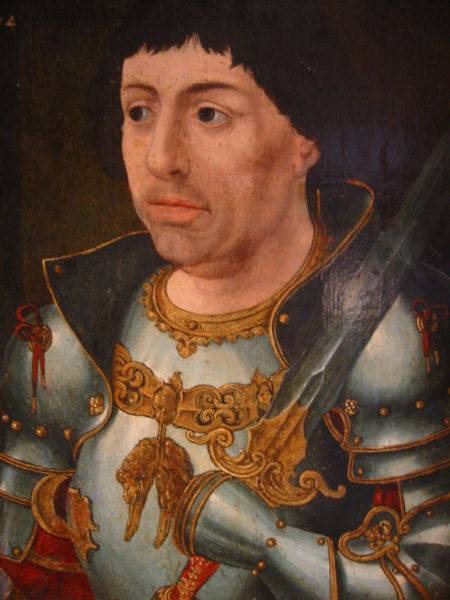
And here it is just him - Karl the Brave. Portrait in battle armor (Museum in Bourgogne).
The duke loved the beautiful, and therefore contributed in every way to the development of the arts at court. In addition, Philip himself was an ardent supporter of the code of chivalry. Thanks to this passion, the Duke established the Order of the Golden Fleece, which has reached our days. Philip's favorite entertainment was knightly tournaments and minnesinger competitions. Naturally, 10, born on November 1433 of the year, was born to the boy, the successor of the family of Philip, named Karl, his father tried to inculcate the features inherent in the real knight. Philip's efforts were not in vain: the heir was a child stupid, obedient, diligent and inquisitive to all sorts of sciences, and therefore his father's passion for fights, hunting, military campaigns safely passed to Karl.
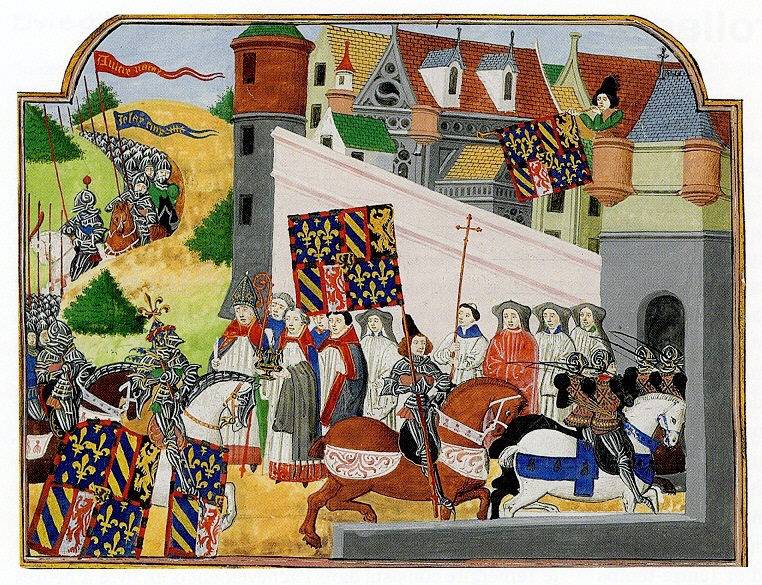
The army of Philip the Good enters Ghent. Miniature from the Chronicles of the Reign of Charles VII by Jean Chartier, 1479, National Library of France, Paris.
Where does childhood go ...
Keeping a hand on the pulse of the political life of France, Philip, naturally, was always aware of events both inside the country and far beyond its borders. And so, after thinking carefully, Philip makes a decision: for the good of his own state, as soon as possible, betray his son and daughter of the French king Charles VII, Katharina. And so that no one dared to break such a profitable party, he performed the rite of betrothal when little Karl was just five years old. Note that the young bride was only four years older than her fiance. Later Karl was married twice more. His choices were the French Isabella de Bourbon, as well as the British Margarita of York. Both were, of course, of royal blood.
While still very young, Karl met with the heir to the French throne, Louis. For Louis, these were not the best times of his life - he was hiding from the wrath of his father in the nearby Duchy of Burgundy.
Another purely "cinema" discrepancy. Look at what leggings the Count de Neuville fights in. It is clear that they are not very visible under clothes and are visible, but ... historical it doesn’t smell true. But - yes, the actor is comfortable.
Acquaintance of the boys grew over time into a strong friendship. Despite the slight difference in age, young people were very different from each other. Karl was a tall and strong young man who already had his certain life position, which he was ready to defend, if necessary, and with a sword in his hands. He lived not on display, luxury, idleness and red tape, flourishing at the court of his father, were not his element.
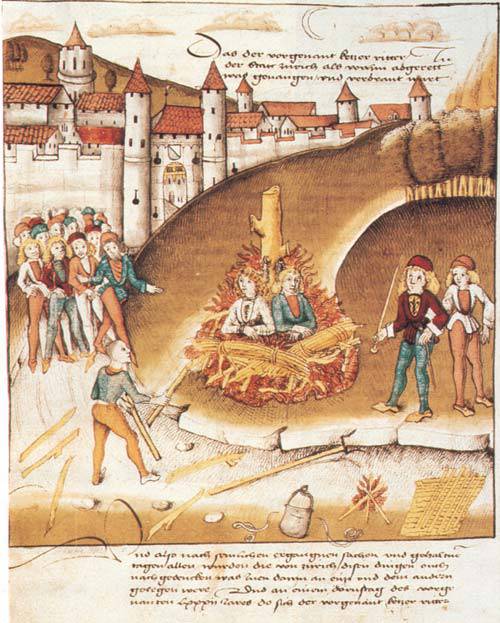
The life of knights in medieval Europe was very different from modern. This miniature shows the burning of a knight and his servant who are caught in a homosexual relationship. At that time, in the Netherlands, as well as in many other places, regular inspections of all men on the subject of predication were carried out, and if traces were found, people were subject to burning, as the most notorious heretics.
Louis, on the contrary, was a young man of short stature, frail. Littleness, which oppressed Louis, was compensated by extraordinary cunning and deceit.
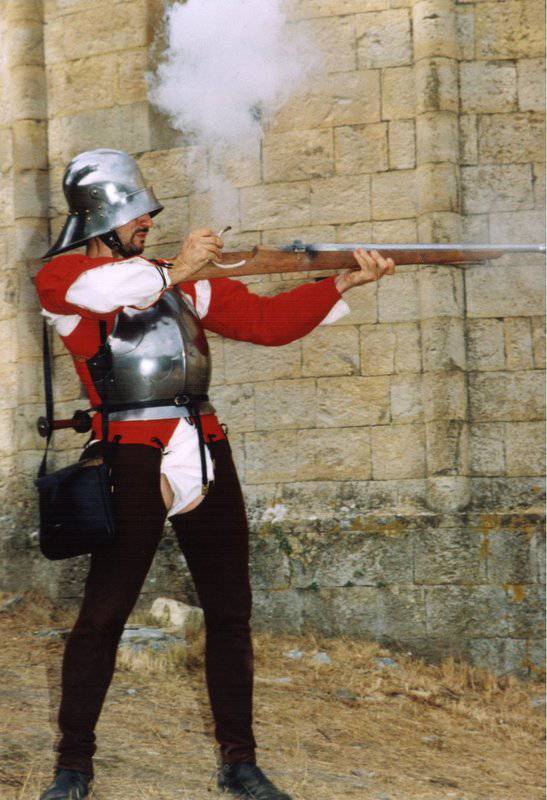
However, on the other hand, manners were very simple. Today we will not think of flaunting in such split-stocking pants, and in the XV century such clothes were familiar. Although the custom of wearing a “front cover half-dispersed, so that the shameful parts could be opened to an indiscreet look,” the church condemned in every way, as well as the “slots” - the loops on the dresses!
The friendship of young people fell apart as soon as in July 1461, Louis became king of France, now Louis XI. From the very first days of accession to the throne, he led the policy of joining the kingdom of lands belonging to the feudal lords under his control. The landowners were extremely dissatisfied with this, the tension grew with each passing day, and as a result, united against their overlord, they concluded an agreement called the “League of the Common Good”. Karl the Brave, who had his own bills with the newly made king, joined this so-called League: a territorial dispute over Charolais County, which they both claimed. And soon the political conflict escalated into military action. Philip the Good had already died by that time, and the son became the heir to the vast possessions of his father. In addition to land, he received the title of Duke of Burgundy. Now, heading the army, which was collected by the “League of Common Good”, he had the perfect opportunity to show all his skills and knowledge, transferred to him by Philip, in action.
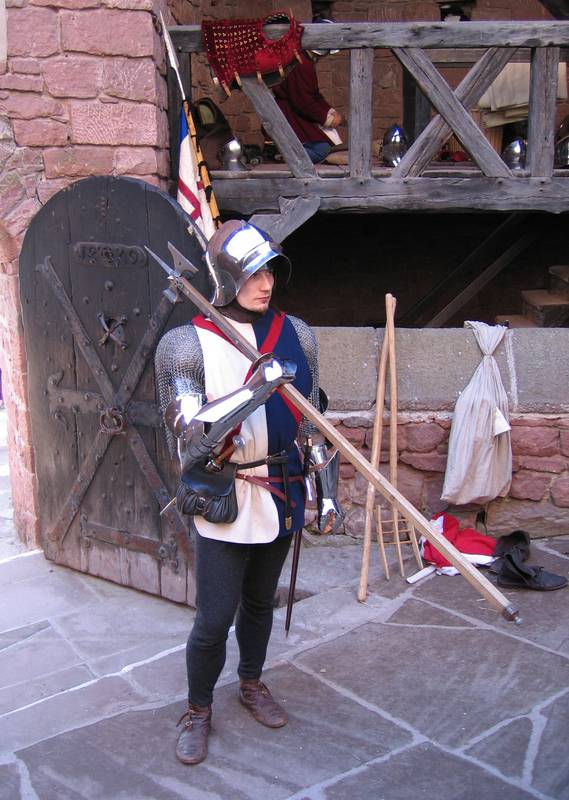
Burgundian soldiers in uniform "uniforms". It was in the era of the Burgundian Wars that soldiers began to wear clothes of certain colors and cut with the appropriate emblems. This allowed them to confidently distinguish them on the battlefield, which was increasingly covered with thick clouds of smoke.
"War" feats of Charles
Karl's first victory was easy and impressive. In the battle of Montleri, in 1465, he won a brilliant victory, defeating the army of his former friend. Deafening defeat forced Louis to abandon his encroachments on the county of Charolais.
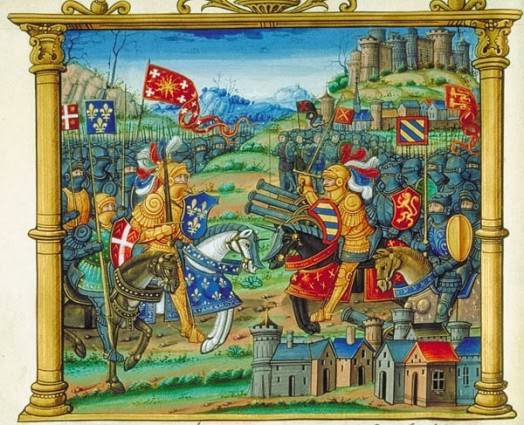
Battle of Montlair. Thumbnail from the memories of Philip Comnenus.
Inspired by the first victory, the duke was ready for new feats. It was recalled that two years ago, in the city of Liege, “under his control”, riots of the townspeople were often caused by excessive exactions. But it was not this that prompted Karl the Bold to enter Liege with the army. Reality turned out to be more vile than the "official" version. There were rumors among the townspeople that Karl the Bold, the Duke of Burgundy, was not the son of Philip the Good. She was born from the connection of the local bishop and his mother, Duchess Isabella, who often retired with the bishop as if for confession. Karl, who firmly considered himself a true knight, could not bear the insults inflicted on his mother’s name. Revenge in the tradition of the cruel and ignorant Middle Ages was carried out immediately. And although, having broken into Liege, Karl did not meet with any resistance from the inhabitants of the city, he mercilessly destroyed everyone who fell in the way, sparing neither women nor children.
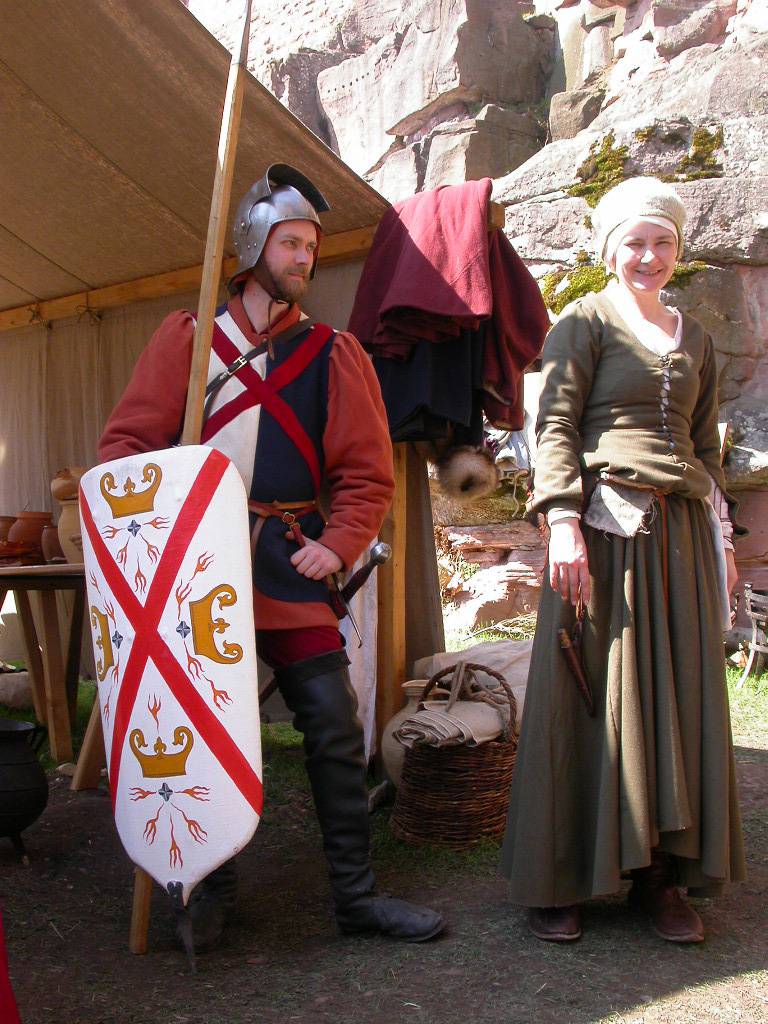
In addition to the “uniform”, the corresponding emblems (of the Burgundians have a red oblique cross) were applied to the shield of the Pavesa.
With his head held high, Karl left the place that was recently called Liege, and now it was just a mountain of ruins. Similarly, the “order” was established in several places in the duchy.
Completely convinced of his own exclusivity, Karl wished to make Burgundy a kingdom, and to receive the crown from the hands of the Pope himself. But the Duke’s plans were never realized. Both the emperor of the Great Roman Empire and the king of France protested. Neither were interested in strengthening Burgundy. And although Karl the Bold and Louis XI had a common goal (to concentrate power as much as possible in their hands), they tried to achieve it in different ways. And if the duke considered brute force as the main and almost the only argument in conflicts, then Louis preferred to solve problems with cunning and intrigue, in which he was a great master. To remove his opponent, the king pulled him into a series of military adventures, which later became known as the Burgundian Wars.
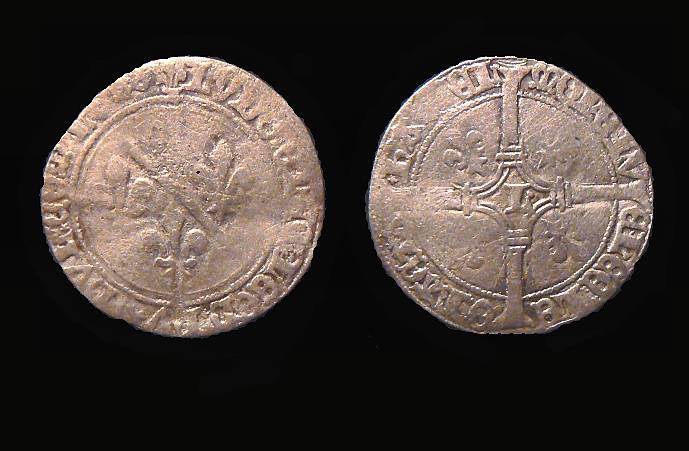
That such coins paid off with the soldiers in 1465 year. Coins of Louis de Bourbon. I wonder how much they got then: a knight-banner — 60 francs a month, a gendarme of three horses — 15, a veil and cranes — 15 francs a month with two horses; walking cranes, coulems and pikes - 5 francs per month.
It was during the Burgundian Wars that he won his second victory, of which he was extraordinarily proud. It was a victory in the battle of Brustem 28 October 1467 of the year. Then Liege, counting on the promised military support from King Louis XI of France, raised a rebellion against Charles. He gathered an army up to 25000 (the figure is clearly exaggerated, as the historian Comnenus reports about the 16000 soldiers in Burgundy) professional soldiers and moved to Liege. Louis XI did nothing to help the city.
Battle between three cities
The army of Liege consisted of 12000 civilians and 500 cavalry. They were under the command of Rice van Heer, his wife Pentecota d'Arkel and Jean de Wilde.
Liegetsians are located in the marshland between Brustem, Saint-Treuden and Orlind. Their commanders thus tried to reduce the effect of the action of the Burgundian artillery.
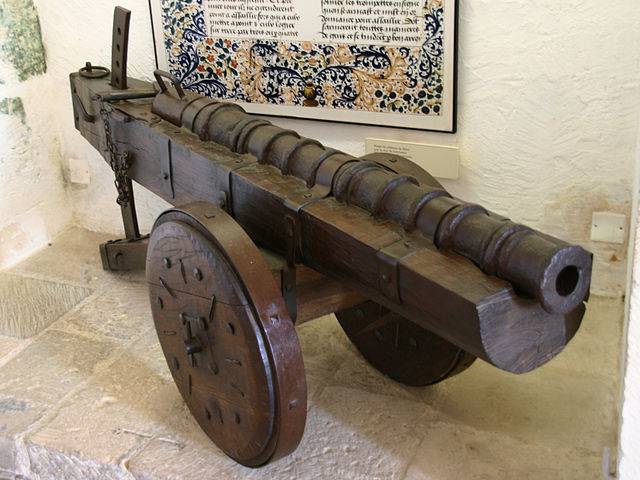
Artillery of the time: Fogler (serpentine or krapodo), from the castle of Castelnau in Aquitaine. A pre-burgundy type carriage.
October 28 Charles ordered his avant-garde under the command of Adolf Cleves to attack the enemy. However, the battle itself did not begin with the attack of the knightly cavalry, but with the shelling, which the Burgundian army tried to dislodge the army of the city of Liege from its fortified position. It is known that at the same time the Burgundians released around 70 kernels from light (field) guns. The Liege detachment was also armed with cannons and kulyurrins and answered them with fire, but for some reason their guns were inaccurately fired. Then the attack of the Burgundians made Liegeians retreat, and they retreated, leaving their artillery. Several thousand people of the Burgundians, including the 500 English archers, were left at St.Treuden to prevent interference in the city’s garrison battle. Nevertheless, the attack from St. Tröyden nevertheless followed, and in its course a significant number of archers were killed.
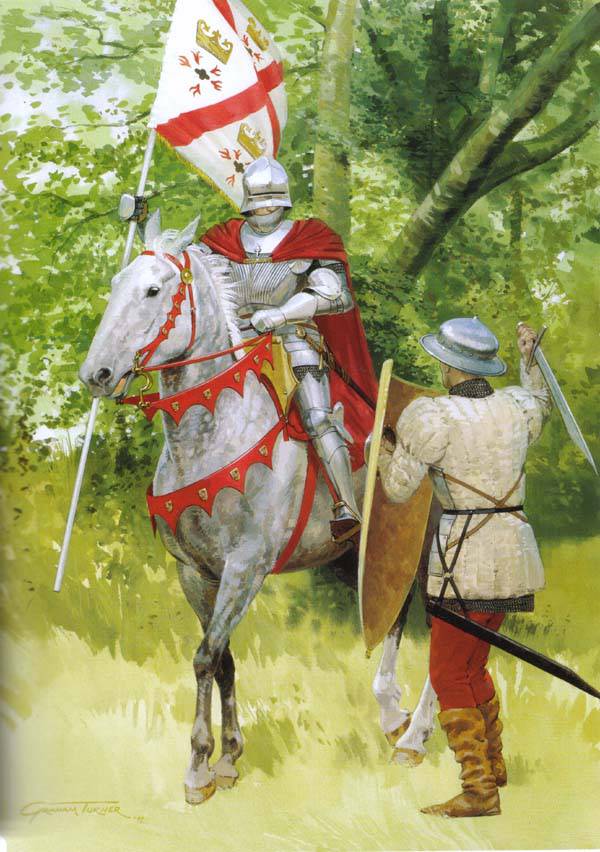
Graham Turner. Knight of Burgundy and the militia of Liege.
Here, however, affected the superiority of Charles in armament. His second line was armed with long two-handed swords, ideal for close combat. The militia of Liege quickly pushed aside, and it soon became obvious that this was a rout. The commanders of the Liege army hurried to leave the battlefield.
Burgundians killed everyone who fell into their hands. Liegeza thus lost about 4000 people, and the rest of the army was saved only by the evening darkness.
War is expensive ...
Then Karl Brave made an attempt to add Alsace and Lorraine to his former possessions. The start was promising, but then King Louis XI, after secret negotiations, managed to turn almost half of Europe against Charles.
Meanwhile, the duke, sticking to the campaigns, rebuilt the life of a small Burgundy, forcing residents to work exclusively on war.
The maintenance of the army required large expenditures. Giving state money for military expenses with one hand, the duke with the other hand took the last from the townspeople. To begin with, all amusements were forbidden. Contests of poets and musicians have sunk into oblivion, and crafts that are not related to military affairs have been annulled. The former wealth of citizens evaporated. And in return, residents received hunger and hopeless poverty.
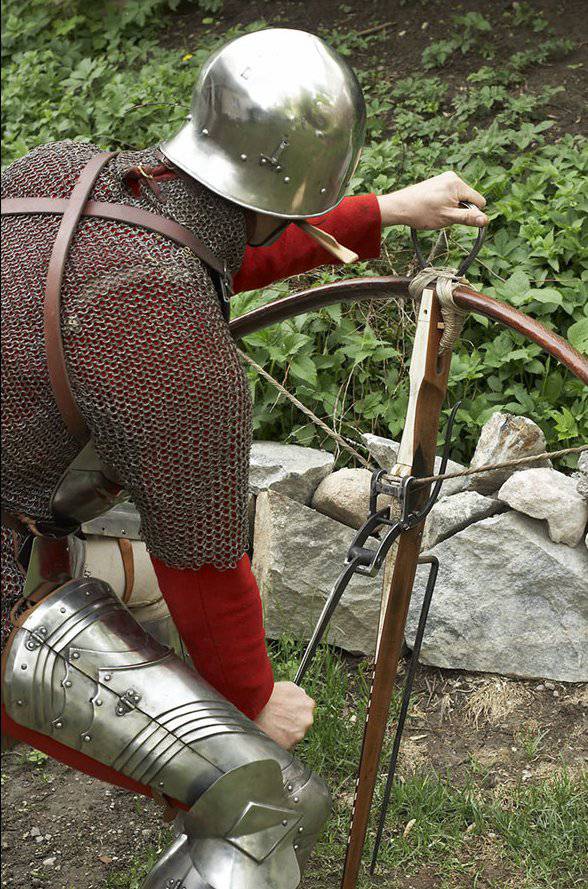
Crossbowman with goat foot charger.
Defeat of Granson
History recalls that no matter how ambitious the ruler is, he alone will not be able to resist the military alliance of developed countries. The Duke of Burgundy was no exception. If he at least coped with the armies of the Germans and the French, then the Swiss army, superior in all respects, turned out to be a serious opponent for him. The first deafening defeat occurred in the 1476 year under Granson. Shortly before this, Charles captured the city, taking advantage of the betrayal of one of his defenders. With the garrison, which was captured, they dealt with as they did with the enemy always: they destroyed it. One part of the soldiers was hanged, the other was drowned in Lake Neuchâtel.
The Swiss "army" in the campaign or modern Swiss reenactors in action.
The Swiss army, in a hurry to help the captured soldiers, it became clear that in case of defeat it is waiting for the same thing. The same sad fate and no one will live. Nobody wanted to be hanged or drowned, and therefore, gathering their strength, the Swiss rushed into battle and defeated the Burgundians. Karl Brave barely took off his legs, abandoning everything that was in his hands and under his command to the joy of the enemies: modern for those times artillery and camp, full of valuables stolen during the march.
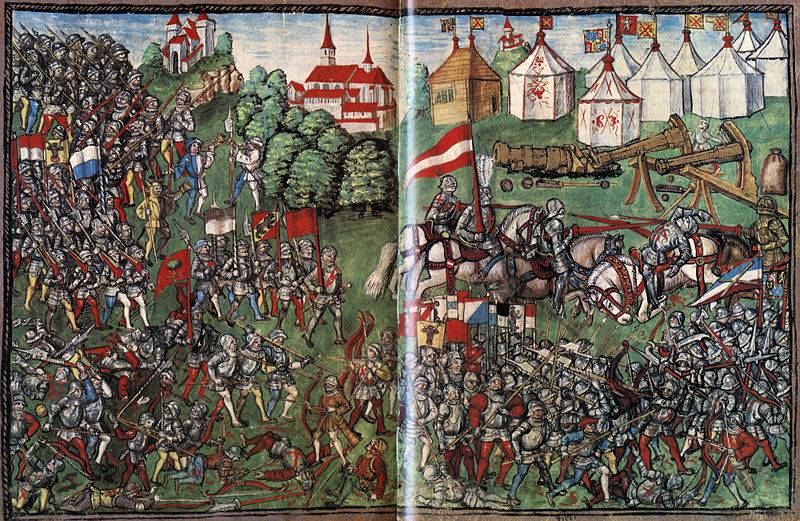
A miniature from the 1515 manuscript from the Zurich Library, depicting the Battle of Granson.
Losing streak
Alas, this defeat did not cool the ardor of the commander. The next unpleasant surprise was waiting for Karl near the town of Murten. Here the duke received another humiliating slap from the Swiss. The testimonies of that epoch directly say that Karl had the opportunity, using some third party as an intermediary, to try to make peace and thus get a chance to return to his native Burgundy, without engaging in battle. Unfortunately, the Duke's self-esteem, greatly wounded by failures, played a cruel joke with him. The only chance for salvation was missed, and thus Carl signed his death sentence. The trouble was that the desires did not coincide with the possibilities: the ambitious plans of Karl the Bold did not coincide with the potential that he had.
By the end of that year, being at the head of the newly formed army, he approached the city of Nancy. The defenders were remarkably brave, and the siege of the city dragged on. As luck would have it, there were severe colds, many of his soldiers got frostbite, and they didn’t want to fight anymore. Karl flatly refused to retreat, believing that hunger would eventually bring the besieged to their knees, and they would be forced to surrender.
Artillery Burgundians in action.
At this time, the army, in the service of which the Alsatians, Austrians, Germans and French were in a hurry to help the people of Nancy. January 5 1477 of the year was fatal for Carl's army. The forces were too unequal. The battle ended in a complete defeat of the army of the duke. Karl died in battle. A few days later his body, disfigured and stripped by marauders, was found nearby in the river. The mutilated face was so unrecognizable that only the personal physician, who, according to old scars, recognized his master, could recognize the duke.
The calculation prepares the gun for shooting.
With the death of Charles the Bold, an entire era in the history of Burgundy ended. Left without an heir, Burgundy was doomed to be divided between the Hapsburgs and the French crown. Sunk into oblivion and the status of the Duchy as an independent European state. The irrepressible ruler Karl the Brave became a historical figure, whose richest biography consists entirely of wars and campaigns, on which he was pushed by the exorbitant ambition and ardor of nature.
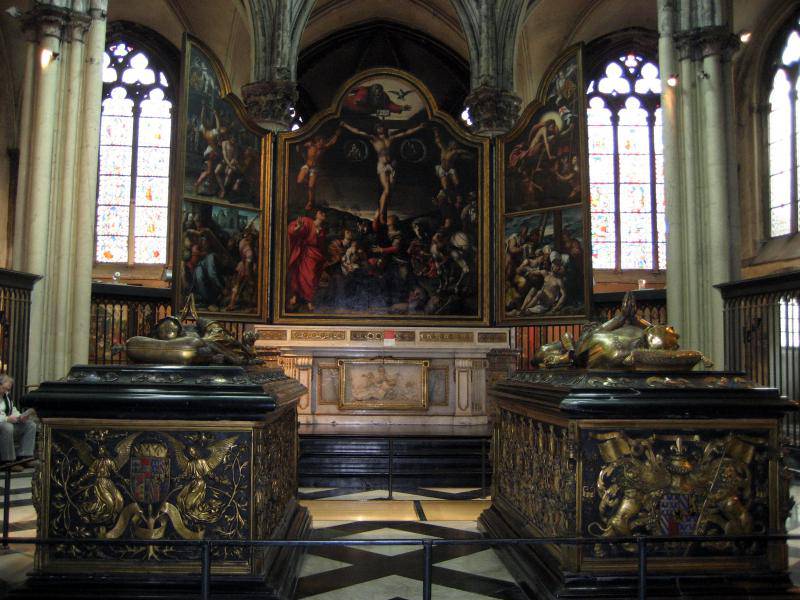
Karl the Bold was buried with honors, and his grave is still in the Church of Our Lady in Bruges, next to the grave of his daughter.
Brave warrior and weak politician
The epithets that the scientists generously handed out, characterizing Karl the Bold, were very contradictory. And yet, do not discount the efforts that Karl made to Burgundy, growing conquered lands, exalted.
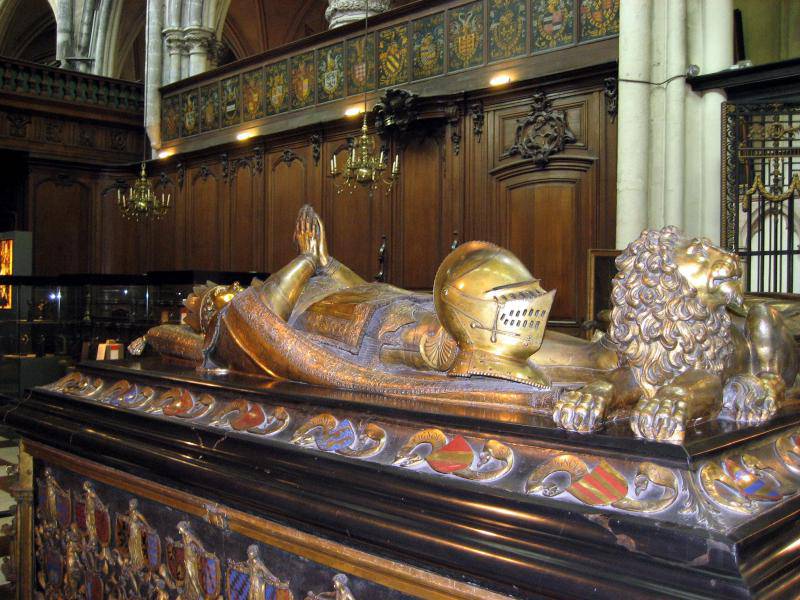
The tombstone of Karl the Bold (1433 – 1477) by Burgundian master Jacques Ionhelink.
Unfortunately, as a result of this aggressive policy, the duchy was on the verge of ruin and complete poverty of the people. The road to hell was laid out with good intentions ... Karl, who received an excellent upbringing at the court of his father Philip the Good, who grew up on the principles of knightly honor, "without trial” to kill the innocent inhabitants of the captured cities. Hotness and haste in actions played a fatal role in his military campaigns.
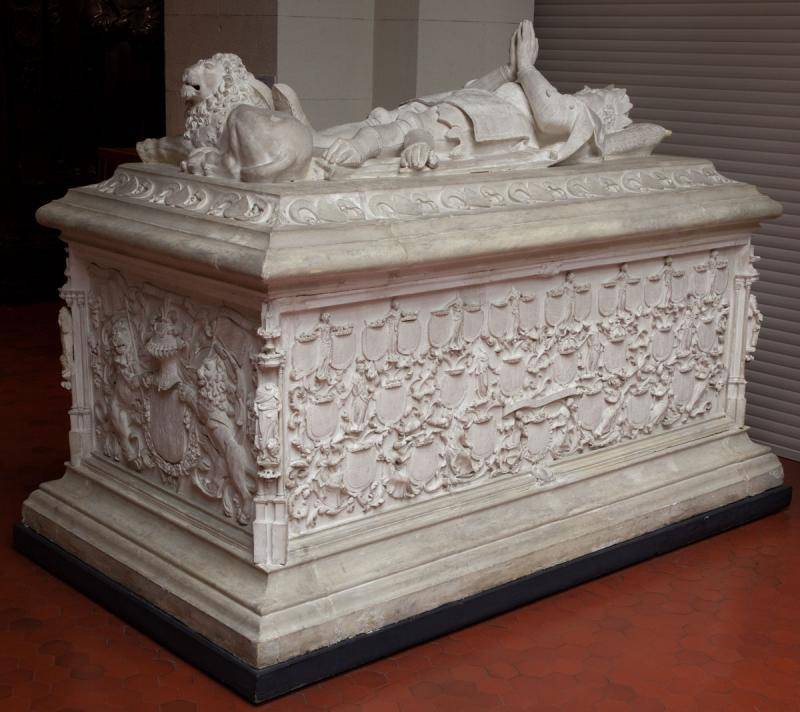
A copy of the museum to them. A.S. Pushkin (Main building of the Pushkin Museum of Fine Arts. Hall №15).
And then what?
Indeed, and then what happened? After the death of Karl, who, unfortunately, had no sons, his 19-year-old daughter Maria of Burgundy became the heir. During the reign of Mary, the extensive possessions of Charles, devastated by wars, officially ceased to be considered the territory of a sovereign state. Louis XI and Maria's husband, Emperor Maximilian I, shared Burgundy with one stroke of the pen. The sad history of the existence of glorious Burgundy, whose ruler was the “last knight”, the tireless Karl the Bold, ended sadly ...
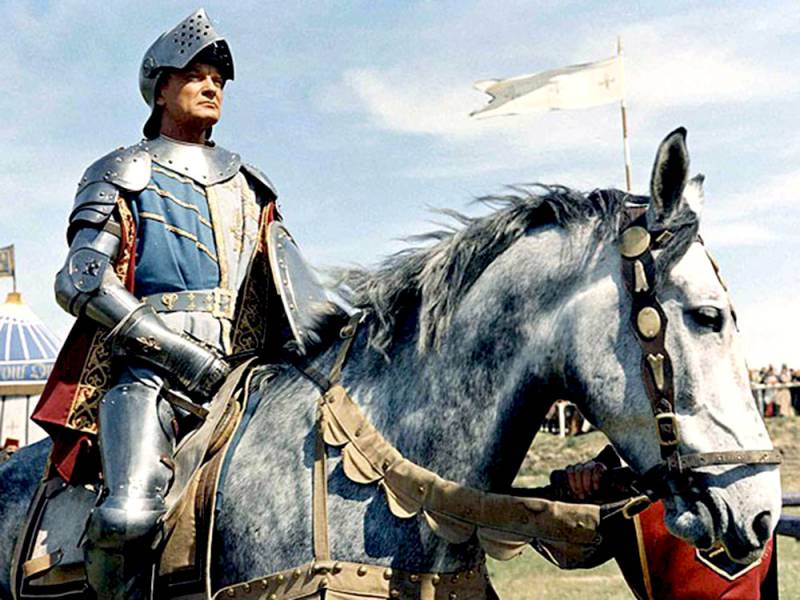
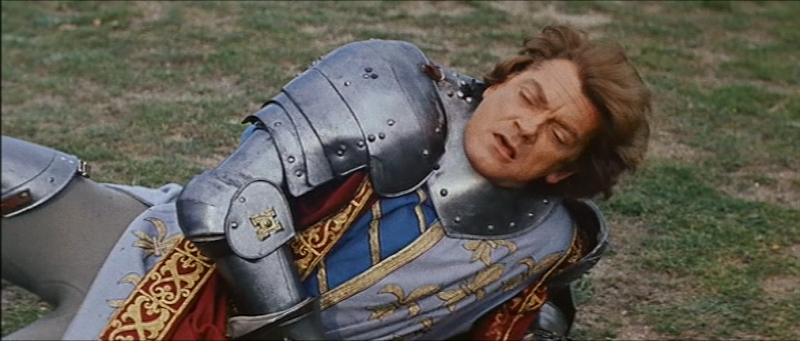
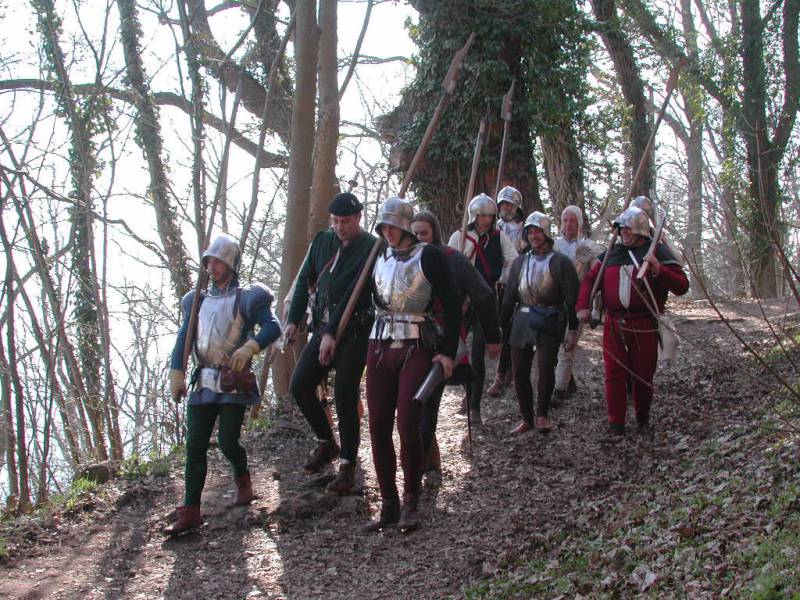
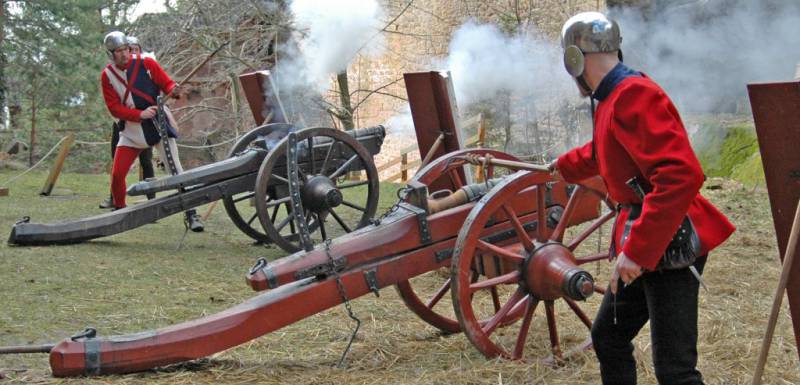
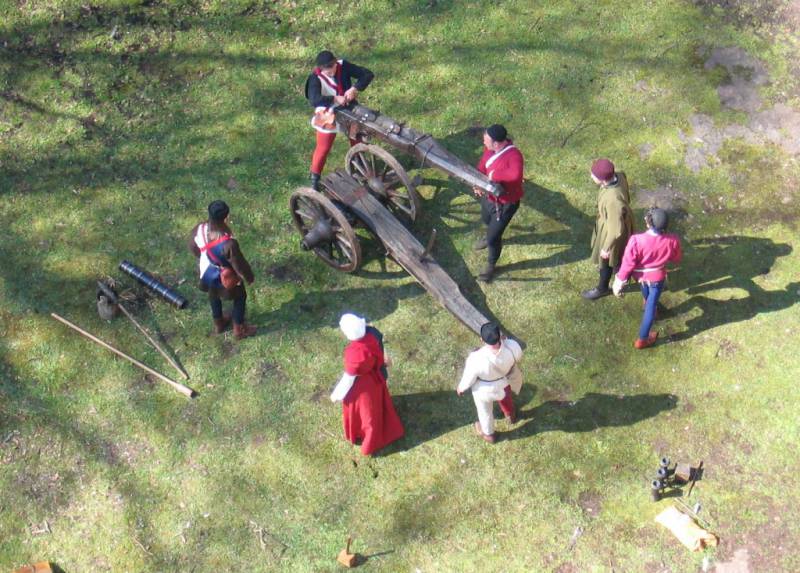
Information